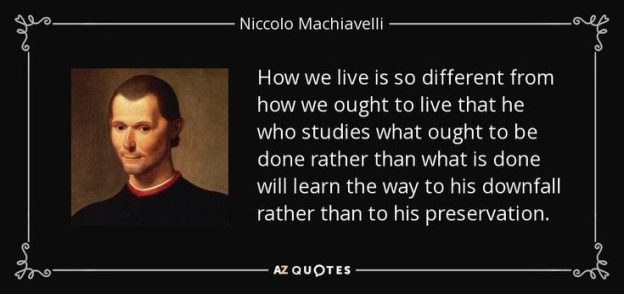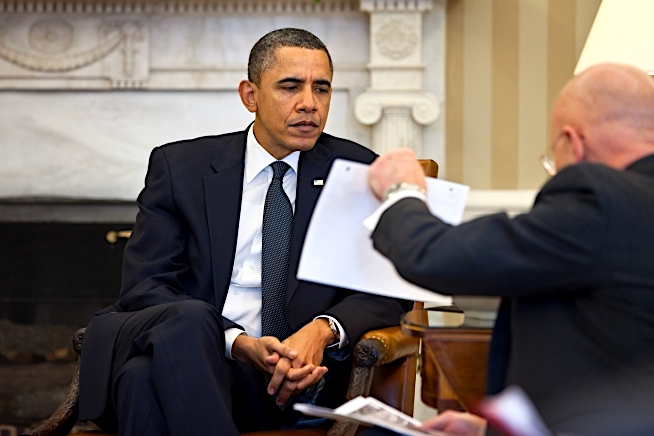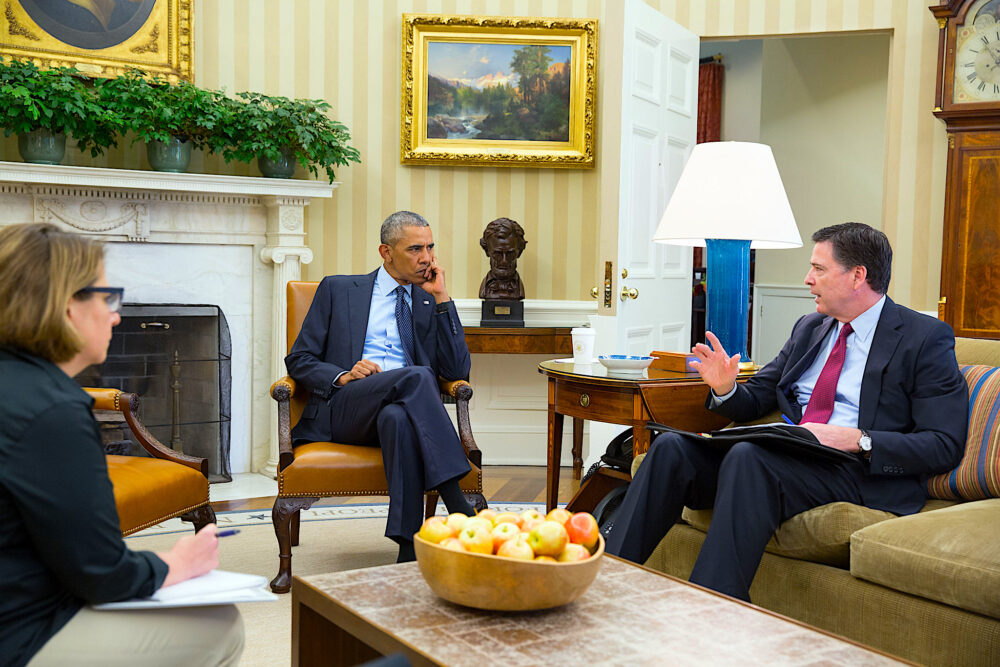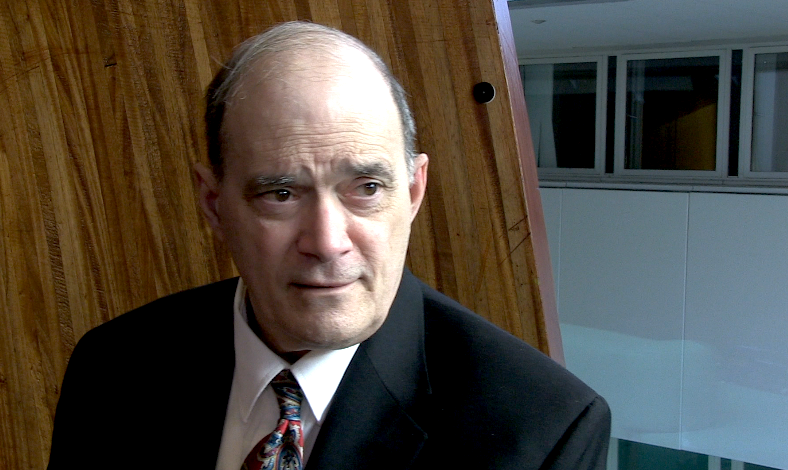Is J.D. Vance a populist?
July 28, 2024 Gregory E. Williams
Part 1: Populists fought the ruling class

Populists saw their party as a tool for bringing relief to the laboring masses.
Since Trump announced Ohio Senator J.D. Vance as his running mate, many in the media have rushed to call Vance a “populist,” as they have also done with Trump. Here are a couple of such headlines: “J.D. Vance’s Populist Pitch” (Time Magazine); “Vance Honed Populist Views in the Senate, Auditioning for Trump” (New York Times).
Others are more skeptical: “The Fakest Populism You Ever Saw” (The Atlantic); “J.D. Vance’s Phony Populism Thrilled the RNC. The Rest of Us Shouldn’t Be Fooled” (The Nation).
So, which is it? Is millionaire Vance a populist or a fake populist? And, for that matter, what is populism?
Populism and monopoly capitalism
Historically, the populist movement in the U.S. was a progressive, left-wing movement. It was centered around the People’s Party in the 1890s and had traction into the first few years of the 20th Century. It was biggest in the South and West, in areas thought to be intractably right-wing nowadays. Based among small farm owners, it was a movement that fought against the rising power of big corporations and banks.
According to Vladimir Lenin’s 1916 analysis in “Imperialism, the Highest Stage of Capitalism,” this was the period when capitalism went from its “free competition” phase (characterized by competition among small and medium-sized capitalist enterprises) to one in which huge trusts, monopolies, and giant banks dominated the scene.
This was the era of the “titans of industry,” such as John D. Rockefeller of Standard Oil and financial magnate J.P. Morgan. We are living in their wake. Think about how, today, so much of the economy and our lives are dominated by a handful of corporations like Amazon, and banks like JPMorgan Chase.
Lenin called this phase of capitalism both monopoly capitalism and imperialism; the term imperialism, here, does include what is conventionally meant by this word because the rise of monopolies forces capitalist governments to conquer new lands and markets — through war if necessary — to secure the monopoly capitalists’ profits.
Populism, then, was very much a movement of its time, where an alliance of small farm owners, shopkeepers, tenant farmers, and industrial workers could emerge and also take on the challenge posed by the rising monopoly class. They attempted to build a coalition between the industrial laborers of the Northeast and Midwest and the farmers of the South and West. This was a truly radical movement against the super-rich like Morgan and Rockefeller.
Unfortunately, the social basis of this coalition no longer exists. According to the USDA, in 2022, farm work represented only 1.2% of U.S. employment. In 1920, 30.2% of the population lived on farms. The age of the small farmer, as well as the small shopkeeper, is over. Nevertheless, there are vital lessons to learn from the era of populism. We can draw inspiration from the populists – and avoid certain pitfalls – as we build today’s movement against the rich and rising fascism.
Populists fought the bosses
Writing during the 1972 presidential election and the Democratic Party primary campaign between liberal Democrat George McGovern and arch-segregationist George Wallace, U.S. Marxist leader Vince Copeland wrote:
“In their time, the Populists elected state legislators and governors, and in one Congressional session during the 1880s, with a total of about 350 members in the House, there were over 50 Representatives with generally Populist leanings. In the election of 1892, they elected some state governors, five U.S. Senators, and 10 Representatives directly and frightened the Wall Street rulers considerably thereby. …
“The legendary Governor John P. Altgeld of Illinois, although not in the People’s Party, was deeply committed to Populist principles. He refused to call Federal troops during the Pullman strike in Chicago (1894) and openly condemned President Grover Cleveland for doing so. It was he who defied every corporation in the country and sacrificed his political career by pardoning the survivors of the original May Day (1886) frameups – the so-called anarchists who fought so magnificently for the eight-hour day.
“Governor Davis H. Waite of Colorado, who was a representative of the People’s Party, sent that state’s militia to protect striking miners at Cripple Creek in 1894 on perhaps the only such occasion in the history of the United States.” (“Southern Populism & Black Labor”)
Copeland was inspired to write about populism at that time because the press was calling both McGovern and Wallace populists. He argued that this was wrong for many different reasons. Neither of these politicians was willing or able to fight the ruling class, as did those who were elected to office on the backs of the populist movement. It is difficult to imagine McGovern and almost impossible to imagine Wallace calling in a state militia to protect striking workers! It is equally absurd to imagine Trump and Vance, or Harris and Biden, standing up for militant strikers.
Populism was anti-racist
One of the biggest contradictions in calling Wallace a populist is that the populist movement was anti-racist. When Wallace was inaugurated as governor of Alabama in 1963, he gave a speech saying, “segregation now, segregation tomorrow, segregation forever,” and he meant it. In September of that year, he sent the state police to the towns of Birmingham, Tuskegee, Huntsville, and Mobile to prevent public schools from opening after federal courts ordered Alabama schools to desegregate. The violence that ensued forced President Kennedy to exert federal control over the Alabama National Guard to open the schools.
Today’s far-right governors like Ron DeSantis (Florida) and Jeff Landry (Louisiana) follow in Wallace’s footsteps. Trump and Vance, who scapegoat immigrants and use anti-Black dog whistles (woke, DEI), are, as well. Trump’s rallies are modern-day Klan rallies.
The politics of Alabama during the populist period were rather different. Copeland writes:
“On June 24, 1880, a large delegation of white workers and white farmers met in Montgomery, Alabama, at the state’s Greenback Labor Party Convention and took a position firmly opposed to school segregation (74 years before the Supreme Court’s ‘historic’ decision!). …
“And at the height of Populism, in the same city of Montgomery, when the Alabama People’s Party held its convention there in 1892 just before getting 46% of the statewide vote, the new party platform declared:
“‘We favor the protection of the colored race in their legal rights and should afford them encouragement and aid in the attainment of a higher civilization and citizenship, that through the means of kindness, fair treatment and just regard for them, a better understanding and more satisfactory condition may exist between the races.’”
There is no doubt that the anti-racist politics of the populist movement were progressive for their day, and even in our own time, when many of the gains of the Civil Rights and other movements have been reversed by the capitalist class’ political onslaught. In the populist movement, it was widely understood that the pitting of Black and white workers against each other benefitted bosses, not workers.
Unfortunately, the populist movement was ultimately unable to build a coalition solidly linking Black and white workers, especially with Black tenant farmers who organized with the Communist Party in Southern states in the 1930s. The populist movement remained a largely white movement, and this was a tremendous weakness.
Had they solved this problem, their power might have been far greater. They could have become a much more serious threat to both Wall Street and the racist ruling class that had reasserted itself in the South through the Klan-led terrorism that overturned Reconstruction. This mass terrorism of the old planters and their supporters was, not incidentally, a forerunner of fascism – fascism avant la lettre.
https://www.struggle-la-lucha.org/2024/ ... -populist/
J.D. Vance, which side are you on?
July 28, 2024 Gregory E. Williams
Part 2: Populism or fascism?

In Charlottesville, Va., on Aug. 12, 2017.
Part 1: Populists fought the ruling class
Between 1922 and 1945, fascist movements came to power in various European countries, either through “home-grown” takeovers, as in Italy, or through military force, as when Nazi Germany occupied France. Like populists in earlier decades, fascists also denounced elites and railed against big business, but these resemblances are superficial.
By the time fascism arose, capitalism had fully morphed into its monopoly-imperialist phase. An independent, oppositional, petty bourgeois politics (of small farm owners and shopkeepers allied with the working class) was no longer possible. Fascism did rely on creating a mass base of the petty bourgeoisie and some sections of workers, notably along racist lines. But this was precisely to defend monopoly capitalism, not to fight it.
Fascism is not simply authoritarianism. It is a particular response of the capitalist class and the state when faced with a deep crisis of the capitalist system, as happened with the First World War and then the Great Depression beginning in 1929.
Agreeing with the whole tradition of bourgeois economics on this point, Lenin concluded in “State and Revolution” that “a democratic republic is the best possible political shell for capitalism, and, therefore, once capital has gained possession of this very best shell … it establishes its power so securely, so firmly, that no change of persons, institutions or parties in the bourgeois-democratic republic can shake it.”
This “democratic republic” is one in which the capitalists are dominant and everyone else is subjugated, but the smooth functioning of parliaments, of the rule of law, and with some buy-in from the masses is, on the whole, conducive to capital accumulation. The democratic republic can ensure stability for the capitalists. Lenin was perfectly aware of the limitations of this bourgeois or capitalist democracy, which rested upon slavery, colonial genocide, and sacrificing millions of wage workers to the sweatshops and coal mines. But this bourgeois democracy is democratic precisely in relation to the anti-democratic fascist alternative.
When the system is imperiled, the capitalists are fully prepared to throw off this democratic shell in order to save the system, as is apparent with the far-right lurch of J.D. Vance’s beloved Silicon Valley, which was once heralded as the promised land of enlightened, liberal capitalism.
Like the big banks and industrialists who bankrolled Hitler, Elon Musk has officially endorsed Trump. The Wall Street Journal reported that Musk plans to donate $45 million per month to a pro-Trump super PAC, which would total $180 million over the course of the election cycle.
PayPal co-founder Peter Thiel gave the Trump campaign $1.25 million in 2016. Vance has called Thiel a mentor. Forbes described Thiel as “a massive difference-maker for Vance’s 2022 Senate run.” He gave Vance $15 million for his senatorial campaign.
Fascism is anti-communism
Fascism did not emerge simply as a way of managing the capitalist state in times of economic turmoil. It emerged as a way for the capitalists to fight back against the working-class movement and even socialist revolution.
The 1917 Bolshevik Revolution in Russia established the first workers’ state after the brief but significant Paris Commune of March 18 to May 28, 1871. The Bolshevik Revolution ushered in a new age, putting socialist revolution on the agenda all over the world and setting the stage for the anti-colonial movements that would sweep Asia, Africa, and Latin America after World War II.
Germany and Italy – the countries that later became the epicenters of fascism – experienced revolutionary situations. Socialists almost came to power in both countries. The same was true of Hungary, where revolutionaries came to power in 1919. The Hungarian Soviet Republic lasted for 133 days. During World War II, the country was taken over by a Nazi-backed puppet government. Fascism represented the revenge of the capitalists and aristocrats against the workers and peasant farmers.
Fascism not only plagued Europe. With its powerful military and industrialization policies, Japan joined the Western imperialists in the early 20th Century, bolstered by a fascist movement centered around the emperor, nationalism, and a belief in racial superiority. Japan violently colonized parts of China, Korea, and the Philippines and occupied almost all of Southeast Asia’s land area and population centers during World War II.
This classical period of fascism was not the end of the story. When the U.S. became the dominant capitalist power after the war, Washington repeatedly used the fascist toolkit to crush people’s movements throughout the Global South. Barely had the war ended, and Washington was overthrowing popular, and even socialist-leaning, governments: Iran in 1953; Guatemala in 1954. They carried out a bloodbath in Indonesia, where 2 million people had been members of the Communist Party during the 1955 elections. Between 1965 and 1966, U.S.-backed forces killed at least 500,000 in Indonesia, with some estimates being as high as 2 million.
All of these atrocities were committed to protect monopoly profits, like those of the United Fruit Company in Guatemala and the Anglo-Persian Oil Company in the case of Iran. Anglo-Persian was the forerunner of BP, which devastated the Gulf of Mexico in 2010 with the Deepwater Horizon oil spill.
Vance and the return of fascism
After the preceding, my conclusion should come as no surprise. J.D. Vance’s politics are classically fascist, not populist. Like Trump, he is part of the return of fascism in contemporary capitalism, an outgrowth of today’s profound crises.
Whereas the populists fought to unite workers and all the “little people” across racial divides, fascism has always been emphatically racist.
Vance echoes Trump on immigration. In his first campaign advertisement in 2022, when running for Senate in Ohio, he said, “Joe Biden’s open border is killing Ohioans. With more illegal drugs and more Democrat voters pouring into this country.” Never mind that Biden is no friend of immigrants; he served under “deporter in chief,” Barack Obama, and signed an executive order in June massively tightening the border with Mexico.
The point is to sow division. Vance advocates finishing the border wall. His racist scapegoating of immigrants is fascist, not populist.
Melinda Butterfield, an organizer of the National March to Protect Trans Youth, which is happening in Columbus, Ohio on Oct. 19, said:
“Vance notably was the primary sponsor of a Senate bill to bar all trans care for trans youth nationwide. His bill would also bar secondary educational institutions, including medical schools, from teaching gender-affirming care for any age. Trump himself has called for investigations of hormone therapy manufacturers, bans on LGBTQ+ inclusive policies in schools, and targeting transgender people ‘at any age.’”
Such attacks on trans people are part of the stock-in-trade of the right wing. They demonize oppressed, vulnerable groups to divide up the working class, preventing us from recognizing our real enemy: the capitalists.
Like historical fascists, Vance wants to limit women’s freedom. He pressured regulators to let police access the records of people who cross state lines for abortions. All his politics around “the family” are geared towards pushing women out of the public sphere and back into the home. The Nazis did the same.
While Vance has criticized Biden for voting for the invasion of Iraq (which was a bipartisan effort), Vance emphatically stands behind Israel’s genocide in Gaza. He talks about winding down funding for Ukraine, but that is only because he wants to shift the focus to military aggression against China.
He is not anti-war. He is a far cry from the populists who organized the American Anti-Imperialist League in 1898, opposing U.S. annexation of the Philippines. Mark Twain was a member.
Like the musician Oliver Anthony, Vance blames the poor for their poverty. This is the main thrust of his “Hillbilly Elegy.” Populists of the 1890s would have run him out of their convention halls for saying such things, clearly seeing through his Appalachian gimmick. He is on the side of the bosses, which is why he denies climate change and champions the mega oil and gas companies (talk about underdogs!).
If we want inspiration from current-day Appalachia, we need look no further than the 2019 coal miners’ protest in Harlan County, Kentucky. When Blackjewel Coal company declared bankruptcy and refused to give the miners their paychecks, many of them camped out, blocking the train tracks so the coal could not be moved. This protest went on from July 29 to Sept. 26, with activists from around the region and beyond joining them in solidarity. (Harlan County was also the site of the 1931 “Harlan County War,” a hard struggle between coal miners and bosses, which inspired the song “Which Side are You On?” by Florence Reece, a union organizer from Tennessee.)
In the 2019 struggle, transgender activists played a key role in running the camp. Thus cisgender, white, working-class men stood firmly with these trans activists and activists of color, showing that the white working class of Appalachia is not a monolith as Vance’s stereotyping would suggest, nor is Appalachia all white. And more importantly, this shows how people change and grow over the course of their struggle. It may be that some miners were unaccustomed to trans people, but that changed over those two months. That is the power of solidarity.
Because of that struggle, the miners were awarded $5.47 million. In January 2020, another group of miners blocked coal trains in Pike County, Kentucky. They eventually got paid, too.
Vance does not represent people like that. He represents the millionaires and billionaires in Silicon Valley, where he made his fortune. The Yale law school graduate is said to be worth $10 million. He and his wife were able to buy a home in Cincinnati for $1.4 million and then another in Alexandria, Virginia, for $1.6 million while millions in this country are homeless. No wonder he plans to let the AI tycoons and cryptocurrency scammers run rampant through the economy. Some venture capitalists stand to get rich from all this, but it will not be trickling down. Workers in Appalachia and the Rust Belt need Vance like they need a hole in the head. We know which side he is on.
Down with Vance, down with Trump! Up with Appalachia, up with the working class!
https://www.struggle-la-lucha.org/2024/ ... re-you-on/
 Falsely Accusing Biden And Harris Of Hating Israel; Falsely Accusing Trump Of Loving Russia
Falsely Accusing Biden And Harris Of Hating Israel; Falsely Accusing Trump Of Loving Russia
In reality both Democrats and Republicans are more or less in lockstep on supporting Israel and subverting Russia, and on every other major foreign policy issue in Washington.
Caitlin Johnstone
July 29, 2024
One of the dumbest things about US politics today is the way both parties constantly attack each other for holding foreign policy positions they don’t actually hold in order to create the illusion that they have meaningful disagreements on foreign policy.
Donald Trump has been campaigning on the cartoonishly ridiculous claim that Biden and Harris have been unsupportive to Israel even as they continue to unconditionally support its genocide in Gaza, which is a perfect mirror of the way Democrats spent years falsely claiming that Trump is a secret agent of the Kremlin even as he ramped up cold war aggressions against Russia. They need to campaign on these completely fictional disagreements regarding the enemies and allies of the US government, because they do not actually have real disagreements regarding the enemies and allies of the US government.
During a speech in Florida on Friday, Trump claimed his new opponent Kamala Harris “stabbed Israel in the back” by skipping Benjamin Netanyahu’s genocide apologia speech before Congress the other day. He contrasted her with himself, saying that he has “done more for Israel by far, than any other president” with measures like recognizing Jerusalem as Israel’s capital and recognizing Israeli sovereignty over the illegally occupied Golan Heights.
“She doesn’t like Jewish people. She doesn’t like Israel,” Trump said of Harris, who (A) is married to a Jewish man, (B) has an established track record of groveling before the Israel lobby, and (C) released an obnoxious statement denouncing anti-genocide demonstrators who protested Netanyahu’s speech as antisemitic terrorist supporters.
This is a continuation of the way Trump and Republicans have been absurdly claiming that Joe Biden has “abandoned Israel”, despite this president having delivered tens of thousands of bombs and thousands of missiles to Israel since October 7 while bombing Yemen, Iraq and Syria to suppress foreign retaliations for Israel’s genocide in Gaza, and providing Israel with limitless diplomatic and PR cover this entire time.
The self-described Zionist Joe Biden couldn’t be more supportive of Israel and its agendas unless he was actually physically in Gaza personally shooting medical workers with a sniper rifle.
When Netanyahu met with Biden this past Thursday he told him, “From a proud Israeli Zionist to a proud Irish American Zionist, I want to thank you for fifty years of public service and fifty years of support for the state of Israel.” Ahead of Netanyahu’s meetings with both Biden and Harris, a senior administration official told the press that there was “no daylight between the president and vice president” on their position on Israel.
There is no way to square this with Trump’s rhetoric about Biden and Harris being evil antisemitic Israel haters. But that’s not going to stop Republicans from making these claims anyway, God bless them.
This is much the same as the way Democrats and their allied media spent years shrieking that Trump was secretly working for Vladimir Putin, when the strongest evidence against this claim was always that Trump is an insanely hawkish cold warrior who spent his entire term actively working against the interests of Moscow by initiating the arming of Ukraine, shredding nuclear treaties, implementing wave after wave of sanctions against Russia, bombing and occupying Syria, undermining Russian energy interests and more.
It was a narrative that was completely divorced from reality, held in place by nothing but rote repetition and authoritative-sounding assertions. Which is why nobody who was actually paying attention to Trump’s real material actions was surprised when Mueller failed to indict a single American for conspiring with Russia at the conclusion of his investigation in 2019.
In reality both Democrats and Republicans are more or less in lockstep on supporting Israel and subverting Russia, and on every other major foreign policy issue in Washington. But you can’t run a political campaign on “Vote for me, I’m exactly the same as my opponent,” so they need to invent these fantasy worlds wherein Democrats are trying to free Palestine from the river to the sea and Republicans are trying to turn the White House into a puppet regime of Moscow.
If both parties stopped pretending to be different from each other regarding the way the US empire is run, Americans would begin to notice that they’ve fallen victim to a scam designed to trick them into thinking they have some control over how their government moves and behaves on the world stage. Like the jewelers who all work for the same employer to create the illusion of competition in John Steinbeck’s “The Pearl”, Republicans and Democrats put on a fake performance of opposition to keep the locals from noticing that the real power in their country is completely unaccountable to their votes.
https://caitlinjohnstone.com.au/2024/07 ... ng-russia/















